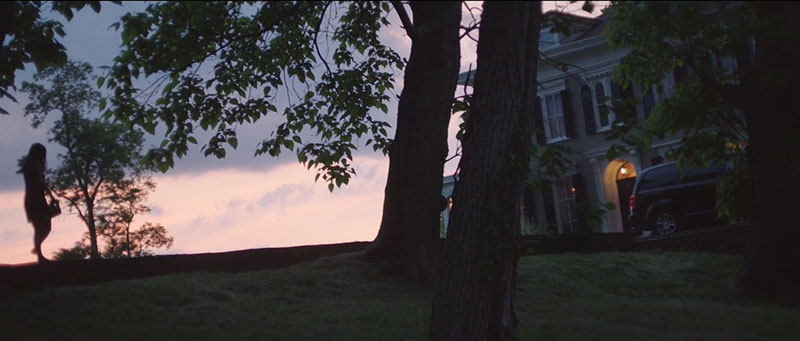Lola

Lola
Directed by Isabella Tan | Review by Nora Jaenicke
Lola is the coming of age story about a young Asian American teenager, whose family pressures her into living a pre-planned life. The story deals with the protagonist’s struggle to find herself, a central conflict that is clearly and starkly dramatized on top of being wildly accessible, given its universal themes. The narrative prerequisites of the film are relatively predictable, but the visual grammar, actor Anna Mikami’s play and brilliant cinematography by Daisy Zhou provide the spectator with a delightful experience. The well-designed environments and the Director’s ability to capture Lola’s loneliness and isolation contributed to creating a world that doesn’t see her for who she is, in spite of Lola inhabiting it physically. She is a “fish out of water”, a theme that is often alluded to by the frequent use of water as imagery throughout the film.

As an audience, we are “allowed” into Lola’s intimacy from the very beginning of the film, when we see her pose in sexy lingerie in front of a web camera, only to realize that the girl that we see is not “Lola” at all. She is, in fact, just an objectification of what society has made of her. A young girl in search of herself that is still hiding behind closed doors. As the story unfolds, we are confronted with the absence of real intimacy from Lola’s life. There is a huge discrepancy between what this young girl feels when alone, her questions about her place in the world, and the one surrounding her. We begin to wonder who she really is. There is also palpable tension when it comes to the exploration of her sexuality, which remains unresolved until the end and feels as if deeply tied with Lola’s wish to also blossom “artistically”.

In following Lola through life, we gain an understanding of her secrets and the suffocating environment that she was raised in. When “a dark figure” from her past shows up, he gifts her with a camera. The ambiguity of such a gift given to her by someone who violated her in the first place makes one reflect upon the power of art. Through art we can “tell our story”, no matter how painful and share it with others. The editing choice, of showing Lola look at her offender walk away while holding the camera that he just gave her, further clarifies her deepest need: To make art and leave her family behind, in this case, quite figuratively. A need for her own perspective, and not what others chose for her. The dinner scene which sees Lola sit right next to her abuser is particularly exemplary of Lola’s inner struggle, as she is not able to say what happened to her, nor express her opposition toward the plans that her family has made for her. Watching her mother find out about the abuse added another layer to the suffocating family portrait, while also making the audience wonder on how she will react after finding out about the terrible secret. At the end of the film images of where Lola wants to be, New York, as a symbol of liberation and creative expression, are juxtaposed to her heading back toward her family home and held together by Lola’s voice singing a magical sounding melody. This is when her dream of escaping starts to feel like a fairy tale, somehow fragile and separated from the heavy and confining reality that surrounds her.

Back home her mother awaits her sitting in the living room. This is a tense moment which creates great expectation within the audience. This is when we wish for Lola’s mother to be understanding, but by revealing excellent mastery in storytelling the Director surprises us with the most ambiguous and yet terrifyingly real mother-daughter “reconciliation”: A slap followed by a hug because that’s perhaps the only way to connect the two separate realities that are at the core of Lola’s identity crisis. This scene is particularly telling of the family member’s inability to break out of their own culture of confinement and censure, while clearly being in a desperate need for it. The mother herself becomes an interesting character that I wish could be explored in greater depth in a feature version of the same short. All in all this entire story begs for more time, given the complexity and urgency of the themes that it tackles. Lola is a touching film that impresses with very good visual grammar and the psychological premises of a very well developed protagonist. A precious and necessary look at female repression and at what lurks behind the surface of a materialistic and seemingly perfect life. An accusation of excessively demanding parenting and a homage to the necessity of creative as well as sexual expression.
 Nora is currently in post-production of one more short film -Joyce, also a short film version of a feature that she is hoping to make: A mosaic of interrelated stories that explore the American Dream and the plight of immigrants in New York City. She is an avid traveler, continuing to explore the world and telling stories about it, whenever she gets a chance.
Nora is currently in post-production of one more short film -Joyce, also a short film version of a feature that she is hoping to make: A mosaic of interrelated stories that explore the American Dream and the plight of immigrants in New York City. She is an avid traveler, continuing to explore the world and telling stories about it, whenever she gets a chance.


